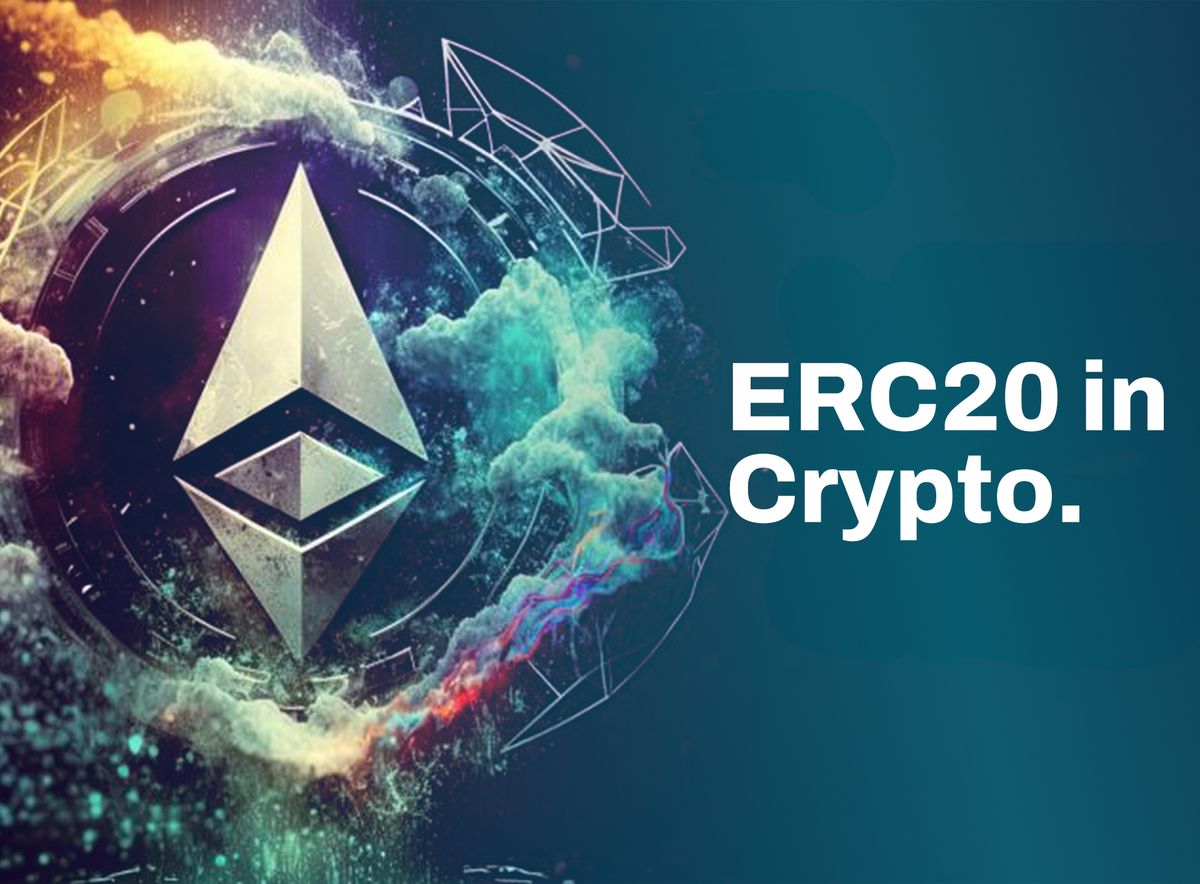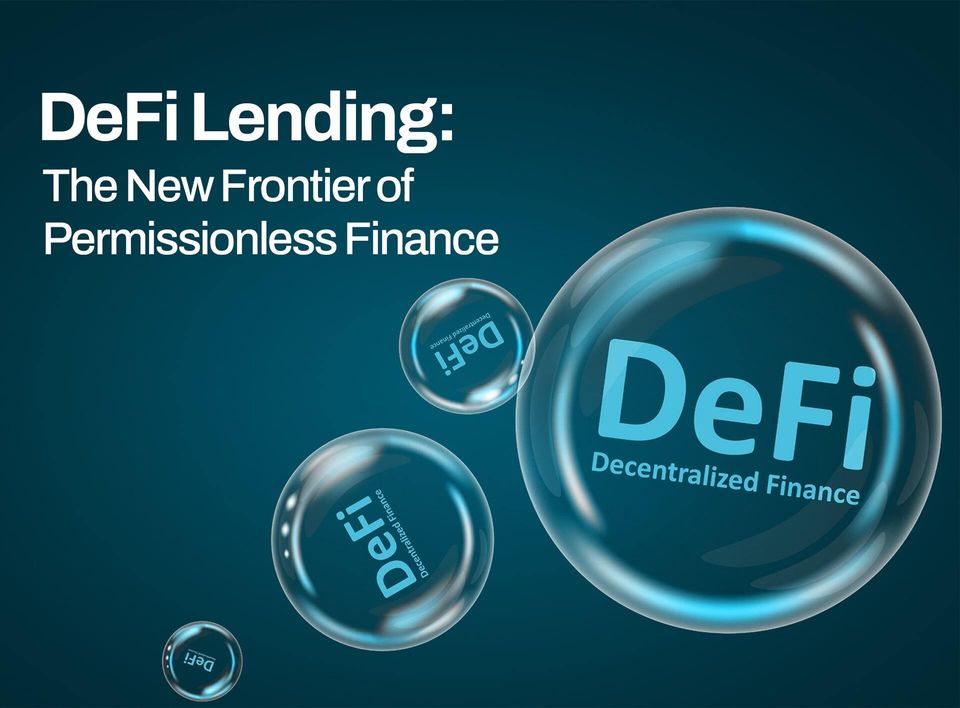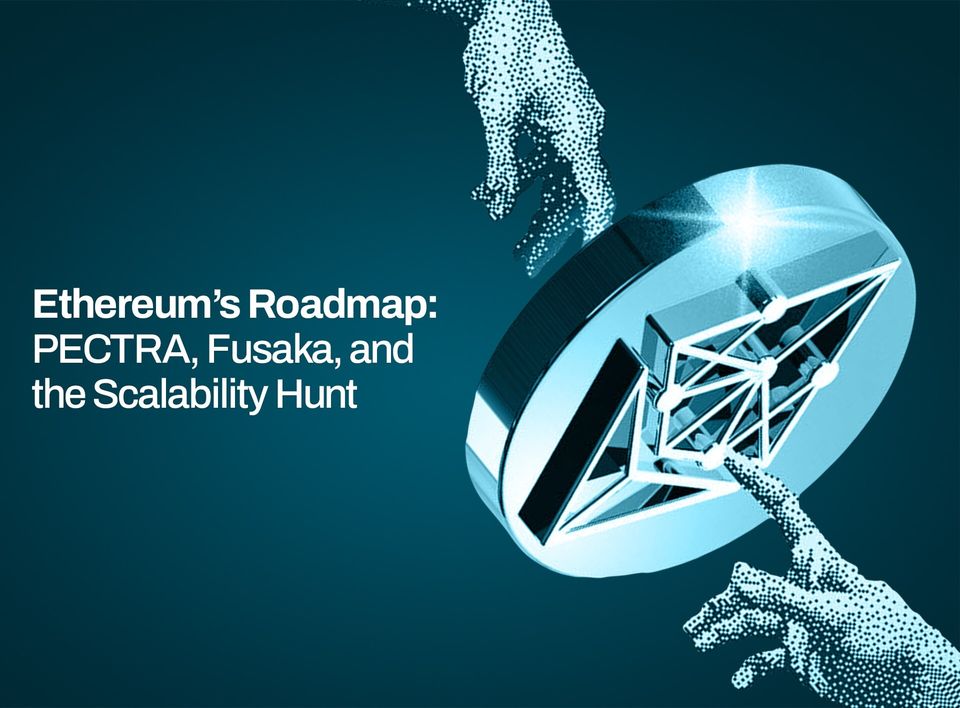What is ERC20 in Crypto?
Understand the ERC-20 standard—its rules, why most tokens use it, and how it powers DeFi and token launches on Ethereum..

TABLE OF CONTENTS:
1. Introduction
2. What is ERC20?
3. Why Does ERC20 Matter?
4. Features of ERC20
5. How Does ERC20 Work?
6. Examples of ERC20 Tokens
7. Advantages of ERC20 Tokens
8. Disadvantages of ERC20 Tokens
9. How to Use ERC20 Tokens
10. ERC20 Tokens Standards
11. Closing Thoughts
12. FAQs
What is ERC20?
ERC20 stands for Ethereum Request for Comments 20. It's a standard protocol used for creating and implementing smart contracts on the Ethereum blockchain.
For a bit of context, you can picture ERC20 as a set of rules that developers follow when creating new tokens on the Ethereum network. These tokens can represent anything from digital currencies to loyalty points or even shares in a company.
One remarkable characteristic of ERC20 is that it ensures compatibility between different tokens and Ethereum-based platforms.
So, if you have a wallet that supports ERC20 tokens, you can store and trade a lot of other different cryptocurrencies without stress.
Why Does ERC20 Matter?
Without ERC20, every token would have its own set of rules, which would be a big disaster. But because of ERC20, tokens can easily interact with each other and with different platforms, making it much easier for people to buy, sell, and trade them.
Most tokens you see on popular cryptocurrency exchanges, like Ethereum, follow the ERC20 standard. That means billions of dollars worth of transactions rely on ERC20 every day.
So, if you're interested in investing in or using cryptocurrencies, understanding ERC20 is necessary because it's the backbone of how many tokens operate in the digital world.
Features of ERC20
1. Token Standardisation: ERC20 ensures that all tokens made using the set of rules in the Ethereum blockchain work in a predictable way. This standardisation makes it easier for different tokens to work with various applications and exchanges, just like how standardised plugs and sockets make electrical devices compatible worldwide.
2. Smart Contracts: ERC20 tokens are created and managed through smart contracts on the Ethereum blockchain. These contracts are pieces of code stored on the blockchain, and they automatically execute pre-established actions when certain conditions are met. For instance, you put in the right input (like sending Ether), and the system automatically gives you the desired output (like issuing tokens).
3. Basic Functions: ERC20 tokens come with six basic functions: totalSupply, balanceOf, transfer, transferFrom, approve, and allowance. These functions allow users to check the total supply of tokens, see how many tokens someone has, send tokens to others, allow others to withdraw tokens from their account, and manage approvals for token transfers.
4. Interoperability: One of the key features of ERC20 is its interoperability, meaning ERC20 tokens can easily interact with other tokens and decentralised applications (dApps) within the Ethereum ecosystem. This compatibility enables a thriving ecosystem where different tokens can seamlessly work together, just like different apps on a smartphone can communicate and share data.
5. Transparency and Permanence: Transactions involving ERC20 tokens are transparent and permanent, meaning once a transaction is recorded on the blockchain, it cannot be altered or erased. This transparency ensures that everyone can verify transactions and track token movements, enhancing trust and security within the ecosystem.
6. Decentralisation: ERC20 tokens operate on the Ethereum blockchain, which is decentralised, meaning it's not controlled by any single entity or authority. This decentralisation ensures that no single entity has control over the entire network, making it resistant to tampering.
How Does ERC20 Work?
1. Token Creation: To create a token using ERC20, developers write a smart contract, which is a set of code that defines the token's behaviour and properties. This contract specifies details such as the total supply of tokens, their divisibility, and other functionalities like transferring tokens between addresses.
2. Deployment on Ethereum: Once the smart contract is written, it needs to be deployed on the Ethereum blockchain. This deployment process involves interacting with the Ethereum network using tools like Ethereum's official wallet, MetaMask, or development frameworks like Truffle. Deploying the contract makes it live and accessible to users on the blockchain.
3. Interacting with the Token: After deployment, users can interact with the token by sending transactions to the smart contract. These transactions can include actions like transferring tokens to other addresses, checking balances, or approving spending allowances for third-party applications.
4. Standard Functions: ERC20 tokens follow a set of standard functions, which define how tokens behave and interact with the Ethereum ecosystem. These functions include methods for transferring tokens (transfer), checking balances (balanceOf), and approving spending limits for other addresses (approve and transferFrom). Following these standards ensures compatibility and inter-operability between different ERC20 tokens and Ethereum-based applications.
5. Decentralisation and Security: Once deployed on the Ethereum blockchain, tokens operate autonomously, without the need for central authority or control. Additionally, the security of ERC20 tokens is ensured by Ethereum's strong blockchain infrastructure, which uses cryptographic techniques to protect against fraud and unauthorised access.
Examples of ERC20 Tokens
1. Tether (USDT):
Tether is among the most well-known stablecoins in the crypto market. Each USDT token is pegged to the value of one US dollar, providing stability amidst the unpredictability of other cryptocurrencies. It is widely used for trading and transferring value across different exchanges and platforms.
2. Chainlink (LINK):
Chainlink is a decentralised oracle network that aims to connect smart contracts with real-world data. Its ERC20 token, LINK, is used to pay for services within the Chainlink network. It enables secure and reliable data transfer between blockchain and external sources, enhancing the functionality of decentralised applications (dApps).
3. Uniswap (UNI):
Uniswap is a decentralised exchange (DEX) protocol built on Ethereum. Its native token, UNI, empowers users to participate in governance decisions and provides liquidity to the platform. UNI holders can vote on proposals to shape the future of Uniswap and earn rewards by staking their tokens.
4. Compound (COMP):
Compound is a decentralised lending protocol that enables users to borrow and lend various cryptocurrencies. Its ERC20 token, COMP, serves multiple purposes within the platform. It allows holders to govern the protocol by voting on proposals and earn interest by supplying assets to the Compound liquidity pool.
5. Aave (AAVE):
Aave is another decentralised lending platform on Ethereum, offering users the ability to borrow and lend cryptocurrencies through smart contracts. The AAVE token, an ERC20 asset, plays a vital role in the Aave ecosystem. It grants holders voting rights on protocol changes and serves as collateral for obtaining loans.
6. Maker (MKR):
MakerDAO is a decentralised autonomous organisation that governs the Maker protocol, which enables the creation of the stablecoin Dai. MKR is the governance token of the MakerDAO ecosystem and is used for voting on key decisions, such as changes to collateral types and stability fees.
7. Synthetix (SNX):
Synthetix is a decentralised platform that enables the creation of synthetic assets, or "synths," which track the value of real-world assets like currencies, commodities, and stocks. SNX, an ERC20 token, is staked as collateral to mint synths and participate in the platform's governance.
Advantages of ERC20 Tokens
1. Standardisation for Compatibility: ERC20 tokens follow a set of rules, making them compatible with various platforms and wallets. This means that once a token is created following the ERC20 standard, it can be easily integrated into different decentralised applications (dApps) and cryptocurrency exchanges without needing any modifications. This standardisation enables interoperability, simplifying the process of token management and promoting widespread adoption.
2. Cost-Effective Deployment: Developing a new blockchain from scratch can be time-consuming and expensive. However, ERC20 tokens can be created quickly and cost-effectively on the Ethereum blockchain. By using existing infrastructure and protocols, developers can save significant resources that would otherwise be spent on building and maintaining a separate blockchain. This lowers the barrier to entry for creating new tokens, enabling more projects to participate in the crypto economy.
3. Enhanced Liquidity: ERC20 tokens benefit from the liquidity of the Ethereum ecosystem, which is one of the largest and most active in the cryptocurrency space. These tokens can be easily traded on decentralised exchanges (DEXs) and centralised exchanges, providing users with abundant opportunities to buy, sell, and exchange them for other assets. High liquidity enhances price stability and reduces transaction costs, making ERC20 tokens more attractive for investors and traders.
4. Smart Contract Functionality: ERC20 tokens are implemented as smart contracts on the Ethereum blockchain, enabling them to include programmable features and automate various processes. Smart contracts can aid functions such as token transfers, token issuance, and token burning, all without the need for intermediaries. This programmability enhances the flexibility of ERC20 tokens, allowing developers to create innovative use cases and implement complex tokenomic mechanisms.
5. Decentralisation and Security: By using the Ethereum blockchain, ERC20 tokens inherit its decentralised and secure nature. Transactions involving ERC20 tokens are recorded on a distributed ledger, making them resistant to censorship and tampering. Ethereum's strong network of nodes also ensures high levels of reliability and uptime. This decentralised infrastructure enhances the trustworthiness of ERC20 tokens, reducing risks associated with centralised control and single points of failure.
6. Community Support and Ecosystem: ERC20 tokens benefit from the vibrant community and extensive ecosystem surrounding the Ethereum platform. Developers have access to a wealth of resources, including documentation, tutorials, and developer tools, to aid them in token creation and deployment. The Ethereum community also actively engages in the promotion and adoption of ERC20 tokens, promoting collaboration and knowledge sharing. This supportive ecosystem accelerates the growth and success of ERC20 projects, driving innovation and value creation.
Disadvantages of ERC20 Tokens
1. Lack of Interoperability: Since ERC20 tokens are specifically designed to run on the Ethereum blockchain, they cannot be easily transferred to other blockchains without complex and often inefficient processes. This limitation restricts the ease of use and exchangeability of ERC20 tokens, making them less flexible compared to tokens built on more interoperable standards.
2. Scalability Issues: As the Ethereum network becomes more and more congested due to the growing popularity of decentralised applications (dApps) and token issuances, transaction fees and processing times can skyrocket. This can result in slow and expensive transactions, especially during periods of high network activity, hindering the scalability and mass adoption of ERC20 tokens for everyday transactions.
3. Vulnerability to Smart Contract Bugs: ERC20 tokens are created and managed through smart contracts, which are vulnerable to bugs. Even a small error in the code can lead to major security breaches, possibly resulting in the loss of funds or the exploitation of token holders. Due to the irreversible nature of blockchain transactions, recovering lost or stolen funds can be extremely challenging, if not impossible, posing a significant risk to investors and users of ERC20 tokens.
4. Lack of Regulatory Compliance: Since anyone can create and distribute ERC20 tokens with minimal supervision, there is a risk of fraudulent or illegal token issuances. Without proper regulatory compliance measures in place, investors may be exposed to scams, Ponzi schemes, and other fraudulent activities disguised as legitimate token offerings. This lack of regulation also makes it difficult for authorities to monitor and enforce compliance with securities laws and investor protections, potentially reducing trust and confidence in the ERC20 token ecosystem.
5. Centralisation Concerns: While ERC20 tokens are technically decentralised in nature, the concentration of token ownership and governance power in the hands of a few individuals or entities can lead to centralisation concerns. Large token holders, often referred to as "whales," may have significant influence over the market price and direction of ERC20 tokens, manipulating prices for their gain or causing market instability.
How to Use ERC20 Tokens
Step 1: Choose a Compatible Wallet
To use ERC20 tokens, the first step is to select a wallet that supports them. Wallets like MetaMask, MyEtherWallet, and Trust Wallet are popular choices. These wallets are compatible with ERC20 tokens and provide a secure way to store, send, and receive them.
Step 2: Obtain ERC20 Tokens
Once you have a compatible wallet, you need to obtain ERC20 tokens. You can acquire them through various means, including purchasing them on the Obiex platform, participating in token sales or airdrops, or receiving them in exchange for goods or services.
Step 3: Add ERC20 Tokens to Your Wallet
After obtaining ERC20 tokens, you'll need to add them to your wallet. This process typically involves copying the token's contract address and adding it to your wallet's interface. Once added, you'll be able to see your ERC20 tokens alongside any other cryptocurrencies you hold in your wallet.
Step 4: Send and Receive ERC20 Tokens
Sending and receiving ERC20 tokens is straightforward. To send tokens, you'll need the recipient's wallet address and the amount you wish to send. Simply enter this information into your wallet's interface, confirm the transaction, and the tokens will be transferred. To receive tokens, share your wallet address with the sender, and once they send the tokens, they'll appear in your wallet.
Step 5: Keep Your Private Keys Safe
It's critical to keep your wallet's private keys safe. These keys are passwords that grant access to your wallet and the funds within it. Never share your private keys with anyone and consider storing them securely offline to prevent unauthorised access.
Step 6: Be Mindful of Gas Fees
When interacting with the Ethereum blockchain, such as sending ERC20 tokens, you'll encounter gas fees. Gas fees are payments made to miners for processing transactions on the network. Be mindful of these fees, as they can vary depending on network congestion and the complexity of the transaction.
Step 7: Stay Informed and Secure
Stay informed about the latest developments in the cryptocurrency space and best practices for securing your assets. The Obiex blog is the best place to get the latest information and educative resources on crypto. Regularly update your wallet software, be cautious of phishing attempts and scams, and consider using additional security measures such as two-factor authentication.
ERC20 Tokens Standards
The following standards make it easier for different tokens to work with various applications and platforms, ensuring compatibility and smooth functionality:
1. Transfer Function: The transfer function is perhaps the most fundamental aspect of ERC20 tokens. It enables users to send tokens from one Ethereum address to another seamlessly. This function ensures that transactions are secure and efficient, allowing users to transfer their tokens without fear.
2. Balance Inquiry: Another essential standard is the balance inquiry feature. This functionality allows users to check the balance of their ERC20 tokens within their Ethereum wallet.
3. Approval Mechanism: The approval mechanism is a smart feature that enhances security and control over ERC20 tokens. It allows token holders to grant permission for specific addresses to spend a certain amount of their tokens. This adds an extra layer of protection against unauthorised transactions.
4. Total Supply: Understanding the total supply of ERC20 tokens is essential for investors and users alike. This standard specifies the maximum number of tokens that can ever exist within a particular ERC20 token contract. It gives clarity on the token's scarcity and inflationary characteristics.
5. Transfer From: The transfer from function is closely related to the approval mechanism. It enables approved addresses to transfer tokens on behalf of the token holder. This feature is particularly useful for decentralised applications (DApps) that require tokens to be moved programmatically.
6. Transfer Event: Finally, the transfer event is a vital standard for tracking token movements on the Ethereum blockchain. It generates an event log whenever tokens are transferred from one address to another. This data can be useful for auditing purposes and monitoring token flow within the ecosystem.
Closing Thoughts
At this point, ERC20 is basically the standard rulebook for making and trading digital money on the Ethereum network. It has made it super easy for lots of projects to start and grow in the world of digital money.
ERC20's simple rules and programmability have made it possible for anyone to join in making and using digital money. As technology keeps getting better, ERC20 is becoming more important, helping new ideas happen, letting more people join in, and making digital money easier for everyone.
So, whether you're someone who's been in this game for a while, just interested in it, or curious about digital money, knowing about ERC20 is not just helpful but really important in this world of digital currencies that keeps growing.
FAQs
Q1. What can ERC20 tokens be used for?
A1. ERC20 tokens can be used for various purposes, including crowdfunding (via ICOs), decentralised finance (DeFi) applications, gaming, digital identity, and more.
Q2. Are ERC20 tokens the same as Ether?
A2. No, ERC20 tokens are different from Ether. Ether is the native cryptocurrency of the Ethereum blockchain, while ERC20 tokens are assets created on top of the Ethereum platform.
Q3. How do I buy ERC20 tokens?
A3. You can buy ERC20 tokens on cryptocurrency exchanges that support Ethereum-based tokens. Simply deposit Ether into your exchange account and trade it for the ERC20 token of your choice.
Q4. Are ERC20 tokens secure?
A4. ERC20 tokens are as secure as the underlying Ethereum blockchain. However, it's essential to be cautious when interacting with smart contracts and to use reputable wallets and exchanges.
Q5. Can ERC20 tokens be mined?
A5. No, ERC20 tokens cannot be mined like cryptocurrencies such as Bitcoin or Ethereum. They are typically created and distributed through token sales or airdrops.
Q6. Can ERC20 tokens be transferred to other blockchains?
A6. No, ERC20 tokens are native to the Ethereum blockchain and cannot be transferred to other blockchains without being converted into a compatible format first.
Q7. What is the difference between ERC20 and ERC721 tokens?
A7. ERC721 tokens, also known as non-fungible tokens (NFTs), are unique digital assets that represent ownership of a specific item or piece of content. In contrast, ERC20 tokens are fungible and can be exchanged on a one-to-one basis.
Q8. Are ERC20 tokens subject to regulation?
A8. The regulatory status of ERC20 tokens varies depending on the jurisdiction and the specific use case of the token. It's essential to consult legal experts and comply with relevant regulations when issuing or trading ERC20 tokens.
Q9. Can ERC20 tokens be burned?
A9. Yes, ERC20 tokens can be burned, meaning they can be permanently removed from circulation. This process is often used to reduce the token supply or to comply with tokenomics models.
Q10. What is the future of ERC20 tokens?
A10. The future of ERC20 tokens is closely tied to the growth and development of the Ethereum ecosystem. As Ethereum continues to evolve with upgrades like Ethereum 2.0, ERC20 tokens are expected to remain a fundamental component of decentralised finance and digital asset ownership.
Disclaimer: This article was written by the writer to provide guidance and understanding of cryptocurrency trading. It is not an exhaustive article and should not be taken as financial advice. Obiex will not be held liable for your investment decisions.




